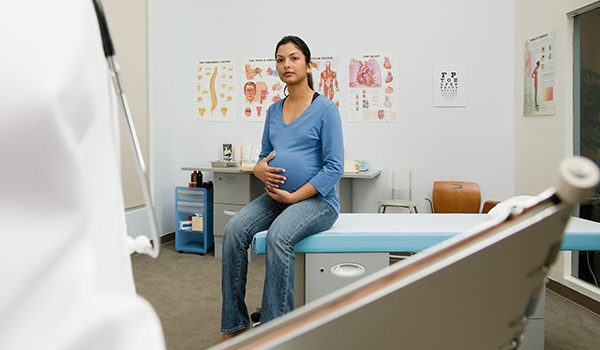Metabolic Consequences of Insufficient Sleep Key point: A small, randomized, controlled crossover study demonstrates changes in a critical insulin-signaling pathway in peripheral tissue. Citations: Broussard JL, Ehrmann DA, Van Cauter E, Tasali E, Brady MJ. Impaired insulin signaling in human adipocytes after experimental sleep restriction: A randomized, crossover study. Ann Intern Med 2012;157(8):549-557. and Cappuccio FP, Miller MA. A new challenge to widely held views on the role of sleep. Ann Intern Med 2012;157(8):593-594. Small …
Management of Ocular Complaints in Urgent Care: Part 1

Urgent message: Triage of eye conditions in urgent care to ensure the best patient outcome requires knowing what equipment to use and understanding when to refer to an ophthalmologist. Always remember to document acuity of vision in all patients presenting with an eye complaint. SARVOTHAM KINI, MD Introduction Ocular complaints are extremely common in the urgent care setting. Yet the capacity of individual urgent care centers to provide high quality eye care is variable. The …
2014 CPT Changes, Suture Removal, Place of Service Code
DAVID STERN, MD (Practice Velocity) Q. I understand that we will be able to bill for cerumen removal for both ears in 2014. Is that true? A.Yes. In 2014, you will be able to bill CPT code 69210, “Removal impacted cerumen requiring instrumentation, unilateral” with modifier -50, “Bilateral procedure.” Keep in mind, Medicare will typically not cover simple, non-impacted earwax removal. CMS requires that physicians meet the following criteria for reimbursement of the removal of …
Abstracts in Urgent Care: December, 2013
Long-term survival following pneumococcal pneumonia Key point: Pneumococcal pneumonia foretold considerably higher 10-year mortality than the expected rate. Citation: Sandvall B, Rueda AM, Musher DM. Long-term sur- vival following pneumococcal pneumonia. Clin Infect Dis. 2013;56(8):1145-1146. Before antibiotics, pneumonia was called “the old man’s friend” for carrying the old and infirm to a swift and relatively painless death. Now that short-term survival after pneumonia is the rule, does the disease provide any long-term prognostic information? Veterans …
Abstracts in Urgent Care: November, 2013
Long-term Survival Following Pneumococcal Pneumonia Key point: Pneumococcal pneumonia foretold considerably higher 10-year mortality than the expected rate. Citation: Sandvall B, Rueda AM, Musher DM. Long-term survival following pneumococcal pneumonia. Clin Infect Dis. 2013;56(8):1145-1146. Before antibiotics, pneumonia was called “the old man’s friend” for carrying the old and infirm to a swift and relatively painless death. Now that short-term survival after pneumonia is the rule, does the disease provide any long-term prognostic information? Veterans Administration …
An Urgent Care Approach to Complications and Conditions of Pregnancy Part 2

Urgent message: From pregnancy confirmation to the evaluation of bleeding, urgent care centers are often the initial location for management of obstetric-related issues. Careful use of evidence-based guidelines is the key to successful outcomes. DAVID N. JACKSON, MD, FACOG and PETAR PLANINIC, MD, FACOG Case Presentation Urgent care providers are called upon to manage a variety of complaints in pregnancy. Some conditions can be managed at the urgent care center whereas others require stabilization and …
An Urgent Care Approach to Complications and Conditions of Pregnancy

Urgent message: From pregnancy confirmation to the evaluation of bleeding, urgent care centers are often the initial location for management of obstetric issues. Careful use of evidence-based guidelines is the key to successful outcomes. DAVID N. JACKSON, MD, FACOG Introduction Although close to 160 million visits are made to urgent care providers each year in the United States, there are currently no prospective studies describing how pregnancy may initiate or complicate an urgent care consultation. …
An Age-Based Approach to Fever of Uncertain Origin in the Pediatric Patient

Urgent message: Fever in pediatric patients, while frequent, is rarely the result of a serious illness. Urgent care practitioners must be able to consistently distinguish between serious and benign causes with a minimum of invasive testing. BRENDAN KILBANE, MD, FAAP Introduction Ever is one of the most common chief complaints in pediatric patients who present for urgent evaluation. A surprising number of families continue to suffer from “fever phobia,” with one study noting that 91% …
Abstracts in Urgent Care: April, 2013
Soft cast versus rigid cast for treatment of distal radius buckle fractures in children Key point: Buckle fractures of the distal radius can be safely and effectively treated with a soft cast and only a single orthopedic outpatient clinic appointment. Citation: Witney-Lagen C, Smith C, Walsh G. Soft cast versus rigid cast for treatment of distal radius buckle fractures in children. Injury. 2012 Dec 21. pii: S0020-1383(12)00516-5. doi: 10.1016/j.injury.2012.11.018 Buckle fractures are extremely common and …
Abstracts in Urgent Care: February, 2013
Flu Activity Picks Up Nationwide Key point: CDC recommends vaccination and antiviral treat- ment against influenza Citation: http://www.cdc.gov/flu/spotlights/flu-activity-picks- up.htm. Centers for Disease Control and Prevention, National Center for Immunization and Respiratory Diseases (NCIRD). Influenza activity was continuing to increase in the United States and most of the country was experiencing high levels of in- fluenza-like-illness (ILI), according to CDC’s January 4 FluView report. “Reports of influenza-like-illness (ILI) are nearing what have been peak levels during …
